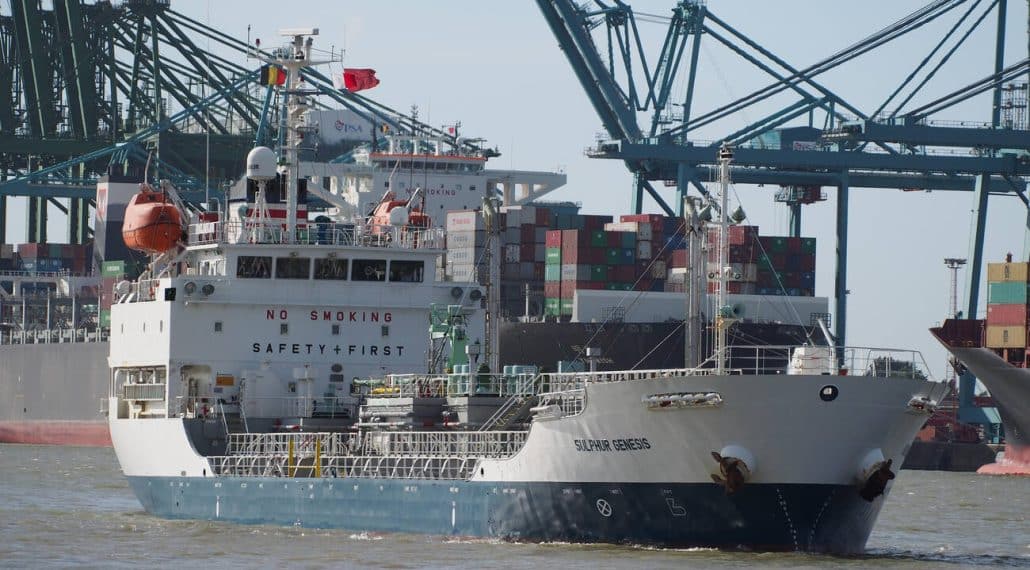Overview
Fuel oil, including Marine Fuel Oil (MFO) and Marine Gas Oil (MGO), is a high-energy residual product derived from crude oil refining. At Zeeland Refinery, we produce a range of fuel oil grades that meet the International Maritime Organization (IMO) emission standards, including the critical IMO 2020 sulfur cap of ≤ 0.5% sulfur for global marine use.
Our marine fuels are tailored for use in deep-sea shipping, coastal vessels, and select industrial applications, where high thermal output and reliability are essential.
Fuel Oil (Marine Fuel Oil)
Production Process
Fuel oil is produced primarily from the residual fractions left after the atmospheric and vacuum distillation of crude oil. These heavier components are then treated to meet fuel stability, combustion, and environmental specifications:
Vacuum Distillation
Residual oils are extracted and separated under reduced pressure to preserve fuel quality.Visbreaking or Blending
To reduce viscosity and improve combustion, heavier fractions may be visbroken (mild thermal cracking) or blended with lighter fractions like marine gas oil.Desulfurization (Optional)
For compliance with IMO 2020, fuel oil may undergo hydrotreatment or be blended with low-sulfur components to ensure total sulfur remains under 0.5%.
Zeeland’s marine fuels meet ISO 8217 specifications for RMG (residual) and DMA (distillate) grades.
Key Characteristics
High Calorific Value
Fuel oil delivers a high thermal output — typically around 40–41 MJ/kg — ideal for large marine engines and heat systems.Viscosity & Density Options
Zeeland offers both:Heavy Fuel Oil (HFO) — high viscosity, economical bunker fuel
Marine Gas Oil (MGO) — lighter, distillate-grade fuel with cleaner combustion
Sulfur Compliance (IMO 2020)
Our bunker fuels are produced in full compliance with the IMO 2020 regulation limiting sulfur content to 0.5% m/m globally, and even lower (≤ 0.1%) for Emission Control Areas (ECAs) like the North Sea and Baltic Sea.Stable Combustion & Storage
Zeeland’s fuel oils are formulated for good stability, compatibility, and resistance to sludge formation — ensuring safe storage and performance onboard vessels.
Applications
Marine Bunkering
Our primary market is the global shipping industry, where fuel oil powers ocean-going tankers, container ships, cargo vessels, and cruise liners.Industrial Heat & Power
In select non-EU markets or industrial facilities, fuel oil is used in boilers, kilns, and thermal power plants, where permitted.
Environmental & Regulatory Alignment
Zeeland Refinery supports the maritime industry’s transition toward cleaner fuels by offering low-sulfur marine fuels that:
Reduce SO₂ emissions by over 85%
Enable compliance without onboard scrubbers
Support ECA operations with ultra-low sulfur grades
We are actively monitoring new trends in alternative marine fuels (such as bio-marine blends and LNG) to support long-term decarbonization goals.

Distribution & Export
Port Export Hub
Fuel oil is shipped via dedicated marine terminals at Van Cittershaven, equipped for high-volume bunkering operations and international export.Marine-Grade Tankers
Delivered to regional bunker stations and directly to vessels operating in Belgium, the Netherlands, Germany, and beyond.Bulk and Blended Solutions
Zeeland offers custom blends tailored to engine requirements, regional regulations, or seasonal operating conditions.
Reference Summary
| Attribute | Specification |
|---|---|
| Fuel grades | HFO (RMG), MGO (DMA) |
| Sulfur content | ≤ 0.5% (IMO 2020), ≤ 0.1% (ECA) |
| Energy content | ~40–41 MJ/kg |
| Main uses | Marine propulsion, industrial heating |
| Standards compliance | ISO 8217:2017, IMO 2020, EU MARPOL Annex VI |
| Delivery modes | Marine tanker, port bunkering, bulk export |
| Export hub | Van Cittershaven |
